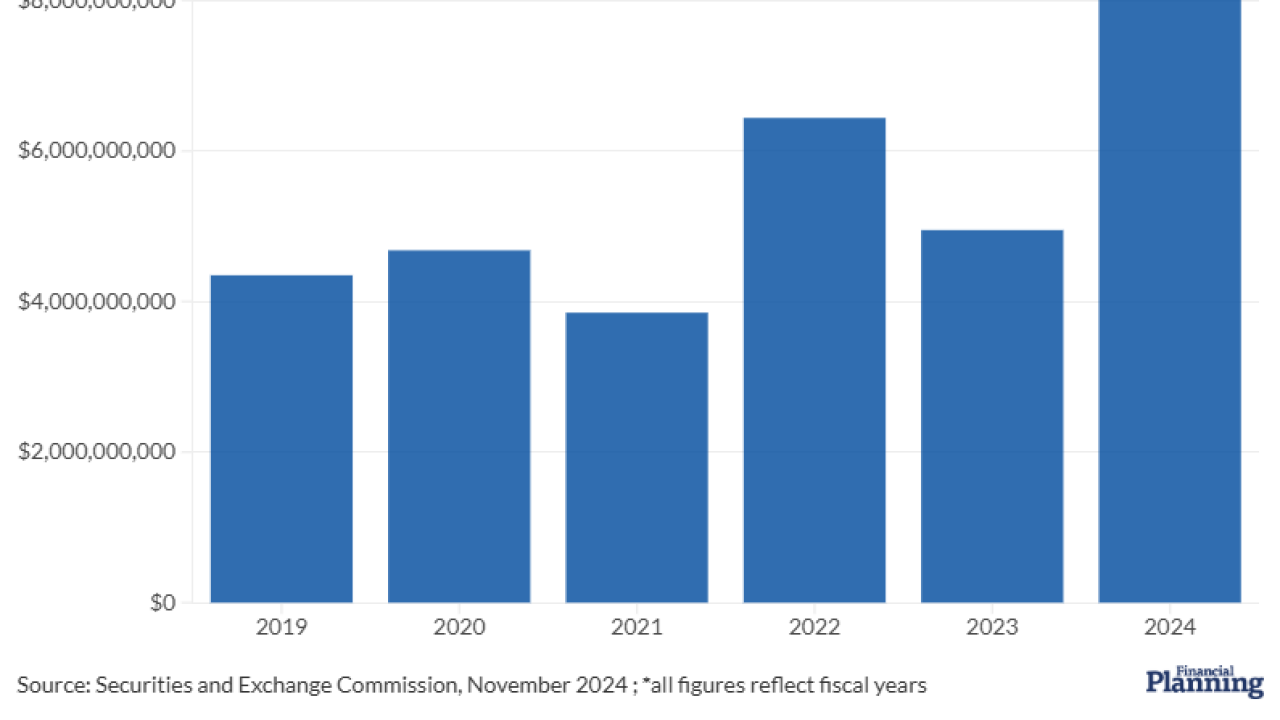Goldman Sachs has been working with technology companies to rewrite algorithms so they can run on quantum computers expected to roll out over the next two to four years.
Like all big banks, the $1.3 trillion-asset Goldman has teams of math geniuses, also known as quantitative analysts, who create algorithms that do things like calculate risk and price derivatives. Their models consume massive amounts of computing power and still have to be run overnight in some cases. Quantum computing, in theory, could be used to solve complex mathematical problems much faster than traditional computers.

Goldman is not alone in this work.
Quantum chips, which have to be kept at subzero temperatures in an isolated environment, promise performance gains of a billion times and more, through the processors’ ability to exist in multiple states simultaneously, and therefore to perform tasks using all possible permutations in parallel.
It’s still futuristic — most experts say the technology won’t be readily available for another five years at least. IBM says it will have a 1,000-qubit quantum computer by 2023.
But at the New York-based Goldman Sachs, William Zeng, head of quantum research, said he and his team have found a way to shorten that time horizon.
They’re taking advantage of something called quantum amplitude estimation, a quantum computing technique that can be used to obtain a quadratic speedup over classical algorithms.
“We've been looking at it because it's a really useful subroutine in things like derivative pricing or risk calculations, or generically to do
Zeng’s team collaborated with the quantum software and engineering company QC Ware to build a special application for solving time-consuming mathematical problems.
“We've developed an algorithmic approach and software that allows those problems to be run on quantum computers,” said Matt Johnson, CEO of QC Ware, which is based in Palo Alto, California. “The only gotcha is that today's quantum computers aren’t powerful enough to do this work. However, in the near term they will be." QC Ware has developed algorithms that can exploit the near-term quantum computers that will be available in the next two to four years, he said.
QC Ware has built a service that sits on top of the Amazon Web Services and Microsoft Azure clouds. It lets financial services companies, as well as pharmaceutical and chemical companies, “run very hard computing problems that would clog up conventional compute systems, and allow those problems to be run much more efficiently on quantum computers,” Johnson said.
Zeng’s group has also worked with engineers at IBM to estimate how good a quantum computer they would need to use quantum amplitude estimation.
“The change we made is that so far folks have looked at quantum amplitude estimation as an all-or-nothing algorithm,” Zeng said. “So if you have a good enough quantum computer, then you can get that quadratic speedup. What that means is, if I have to make 'n' different samples on a classic computer, I only need to make square-root-of-n samples on a quantum computer to get the same accuracy. If you were making a million samples on a classical computer, you only need to make a thousand samples on the quantum computer. That could be a thousand times better.”
Practical applications
This is all still in the research stage, but Zeng and others at Goldman are eager to deploy the technology.
“The more accurately we can model risk, that improves our bottom line and it means we can give our clients better prices as well,” Zeng said.
Derivatives pricing is another area where Zeng expects quantum computing to be useful. Derivatives are contracts involving underlying assets that move stochastically — in other words, they’re random and hard to predict.
“One way in practice that people try to figure out what the price of a derivative should be is they model a bunch of scenarios for how the assets could move based on a stochastic model,” Zeng said. “How many of those scenarios do you need to calculate in order to get to an accurate answer? Obviously, the more scenarios you calculate, the more accurate an answer you're going to get about what the price of the derivative should be. We would like to be able to do that faster and with less compute resources, as would any big financial services firm that does this kind of calculation on an extremely large scale.”
Machine learning is another type of application that could benefit from the computing advantages of quantum.
New breed of algorithms
The algorithms banks use to calculate risk and prices have to be redesigned before they’ll run well on a quantum computer.
“The first thing it is important to understand is that a quantum computer is not a faster classical processor,” said Iordanis Kerenidis, head of quantum algorithms at QC Ware. “The things that we run on our classical computers cannot be taken as they are and run on quantum computers with the hope of better and faster answers. Quantum is a fundamentally different way of computing because it is based on fundamentally different actions like the actions of quantum physics and quantum mechanics.”
Quantum computers today are not strong enough or big enough to run complex algorithms at scale and speed.
But by redesigning the algorithms today, “when the hardware becomes better, then the workflow will be ready,” Kerenidis said. “This is why companies like Goldman are very interested in creating these new algorithms, so that the moment the hardware starts becoming better, and we expect this to happen in the next few years, we will be ready to start getting better solutions and more efficient solutions from the quantum hardware.”
The new algorithms Goldman and QC Ware have created require fewer resources than traditional ones, therefore, they could run on less-advanced quantum machines.
“What we know now after the project that we did with Goldman is that we don't need a million qubits any more, but we might actually need a few thousand qubits,” Kerenidis said. “So what we did is basically compress the timeline to the applications by reducing the resources that our algorithms use. So the hardware is advancing, they're producing more and more qubits, but on our side, we are creating very powerful algorithms that can provide this speedup in performance with fewer qubits and lower-quality qubits.”
So far, the processors on available quantum computers don’t have enough memory to even test the risk and pricing models Zeng’s team have created.
“We've run some very, very small toy ones, but I hesitate to say they're examples,” Zeng said. “What we've been doing instead is doing the research on the theoretical side. It's a mathematical proof that if we had a bigger quantum computer, then we could show that it would give us the right answer.”
To be sure, quantum computing initiatives take patience. The work realistically will not pay off for years, as hardware companies like IBM, IonQ and D-Wave work to scale up their machines.
But Zeng has no problem with the long timeline.
“It's all about multiplying the risk and the timeline against the upside,” Zeng said. “You could have asked a similar question in 1955 or 1960 about classic computing. It's still early days — there's still a huge amount of tech risk. These things are really hard to build. But it is clear that if it can be built, the impact could be very, very, very large.”
Five years ago this was an academic field with maybe a thousand people working in it who all knew each other, Zeng said.
“Now we're looking at the problems very differently," he said. "We're looking at, practically, how can we use this to price a derivative? As the field matures from something that's been purely academic research to something that has industrial resources and also focus and perspective behind it, then we're going to see rapid progress.”
It’s all worth the wait, he says.
“In financial services, we think there's lots of really big, great problems to deploy on,” Zeng said. “There are a lot of great math problems where compute is the limiting factor. And so one of the things that our group does is try to engage with that research community and show that applications in finance are a really ripe place to look for a new technology like this.”





